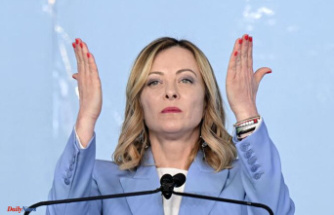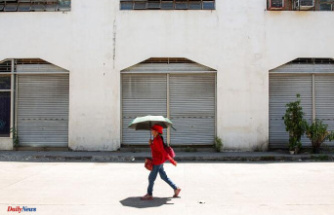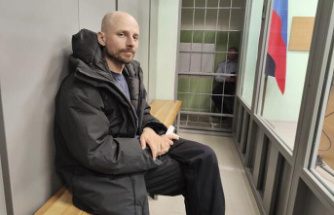“European funds should serve as a carrot to initiate ambitious structural reforms that would normally not be carried out. In the summer of 2020, when setting up the European recovery plan, for an unprecedented amount of more than 723 billion euros, several States, including Austria, pleaded for the payment of subsidies and loans are conditional. It is this line that prevailed: to receive its share, each country must justify to the European Commission the commitment to reforms and the achievement of specific objectives.
These conditions are meant to ensure that the plan delivers on its promise: to build a more economically and environmentally resilient Europe, while helping the most fragile countries to catch up. However, there is room for interpretation. Commitments are more or less ambitious depending on the country, and not always kept.
Two and a half years after laying the groundwork for the plan, the European Commission finds itself faced with a dilemma. Should we demand strict application of the roadmap, even if it means freezing tens of billions of euros? Or compromise on the objectives, at the risk of reducing the expected effects of the economic stimulus? The European collective Recovery Files, initiated by the independent Dutch platform Follow the Money ("follow the money") and of which Le Monde is a member, investigated these negotiations.
Not always ambitious "targets and milestones"
The objectives of the recovery plans submitted by member states are presented as "targets and milestones", a term which combines subsidy programs and reforms. Each payment request sent to Brussels must be accompanied by an inventory of the promises made, with supporting documents. In total, the European Commission will have to judge compliance with more than 5,000 "targets and milestones" by 2026, in parallel with the release of funds.
In the summer of 2021, France received a first tranche of subsidies of 5.1 billion euros after the validation of its plan, out of the 40 billion requested from Brussels. It then received a second payment of 7.4 billion euros on March 4, 2022, after having justified the fulfillment of its thirty-eight commitments for 2021. On the scale of the Twenty-Seven, in January 2023, 94 of the 338 billion in planned grants have been disbursed, as well as 45 of the 386 billion in loans.
Behind these figures, the ambition of the objectives is variable. This was also discussed during the negotiations prior to the launch of the recovery plan in the summer of 2020. According to a 250-page document summarizing these negotiations, published by Brussels in response to a request for access to administrative documents from Follow the Money, several states such as France, Cyprus or Hungary were in favor of including in the "targets and milestones" reforms already implemented. For Paris, it was necessary to prevent states from delaying certain reforms for the sole purpose of making them objectives of the plan.
This is why the reforms already carried out are included in the commitments of the recovery plan submitted by France in April 2021. For example, the new method of calculating personal housing aid (APL) appears there, while it was implemented on the previous January 1.
At least seven member states have already implemented "commitments" in their plan. They represented, for example, 23 of the first 37 objectives of the German plan and half (13 out of 26) of the first commitments of the Dutch plan.
Another big trick: the inclusion in the national plans of the transpositions of European directives into national law or of the objectives linked to these European commitments, which in principle should have been adopted no matter what. At least eight countries (Bulgaria, Croatia, Cyprus, Italy, Lithuania, Romania, Slovakia and Spain) have taken advantage of it, according to our tally. Rome has thus included in its plan an air pollution control program by the end of 2021. However, this was already required of it by a European directive of 2016, to which Italy should have comply as of April 2019.
Crack down or compromise?
Other objectives, on the contrary, prove to be much more difficult. The German government has thus provided in its plan to invest 712 million euros to help research on vaccines against Covid-19. The objective was to have two vaccine candidates supported by these funds approved by the European Medicines Agency by the third quarter of 2021 at the latest. At the time, BioNTech had already had its own approved, but its German rival CureVac hoped to propose a second one… except that the company abandoned its vaccine project at the end of 2021. A snub for CureVac, but also for Berlin: this objective having not been achieved, the European Commission is entitled to reduce the funds granted to Germany.
No clear rule has been established at this stage to resolve situations of this type, firstly because the payment requests in Brussels do not necessarily correspond to the sums committed by the States - one can for example request 1 billion euros to fund actions that actually cost 0.9 or 1.1 billion; then because it can be understandable that not all the targets of the plan are achieved. Result: the European Commission discusses on a case-by-case basis with the member states.
The European Court of Auditors criticized this situation in a report published in September, and pleaded for a clear methodology for calculating payment reductions in the event of targets not being met, so that each State is treated fairly. Questioned by our Follow the Money partners, the Commission ensures that it is preparing a partial payment methodology that follows its recommendations, without giving a specific deadline.
Goals increasingly difficult to achieve
The obstacle has, it seems, been avoided so far. Only eleven of the twenty-seven member states have ever received EU funds linked to the achievement of their "targets and milestones". Some, such as Belgium, which needs to implement a pension reform to start receiving European credits, are playing for time. The French government has avoided this pitfall: its pension reform project is mentioned in the recovery plan, but is not part of the formal commitments that condition the subsidies.
Poland and Hungary will also come under scrutiny, with both countries having to resolve crucial rule of law issues to unlock payments. They are not the only ones. In December, Romania submitted a request for payment. Brussels will have to judge whether the 2019 whistleblower protection directive has been correctly transposed into Romanian law before releasing the credits. However, the law passed in Bucharest is attracting criticism: "We believe that it offers a low level of protection compared to pre-existing legislation," says Laura Stefan, an anti-corruption expert from the Expert Forum think tank in Bucharest.
The question will eventually catch up with the majority of European countries, because the complexity of the commitments will increase. "The most difficult 'targets and milestones' are scheduled for the years 2025 and 2026", at the end of the recovery plan, observes David Bokhorst, associate researcher at the European University Institute in Florence. For example, Portugal has planned to enroll about 800,000 people in a digital education program by the third quarter of 2025. "That's 8% of the country's total population," Bokhorst notes. How to ensure that as many people follow these trainings? And how good will those programs be? ".
Beyond budgetary considerations alone, this situation raises questions as to the purpose of European credits. What will be left in 2026? It is more on its great economic and environmental ambitions that the recovery plan will be judged, more than on the precise respect of its 5,000 "targets and milestones".












